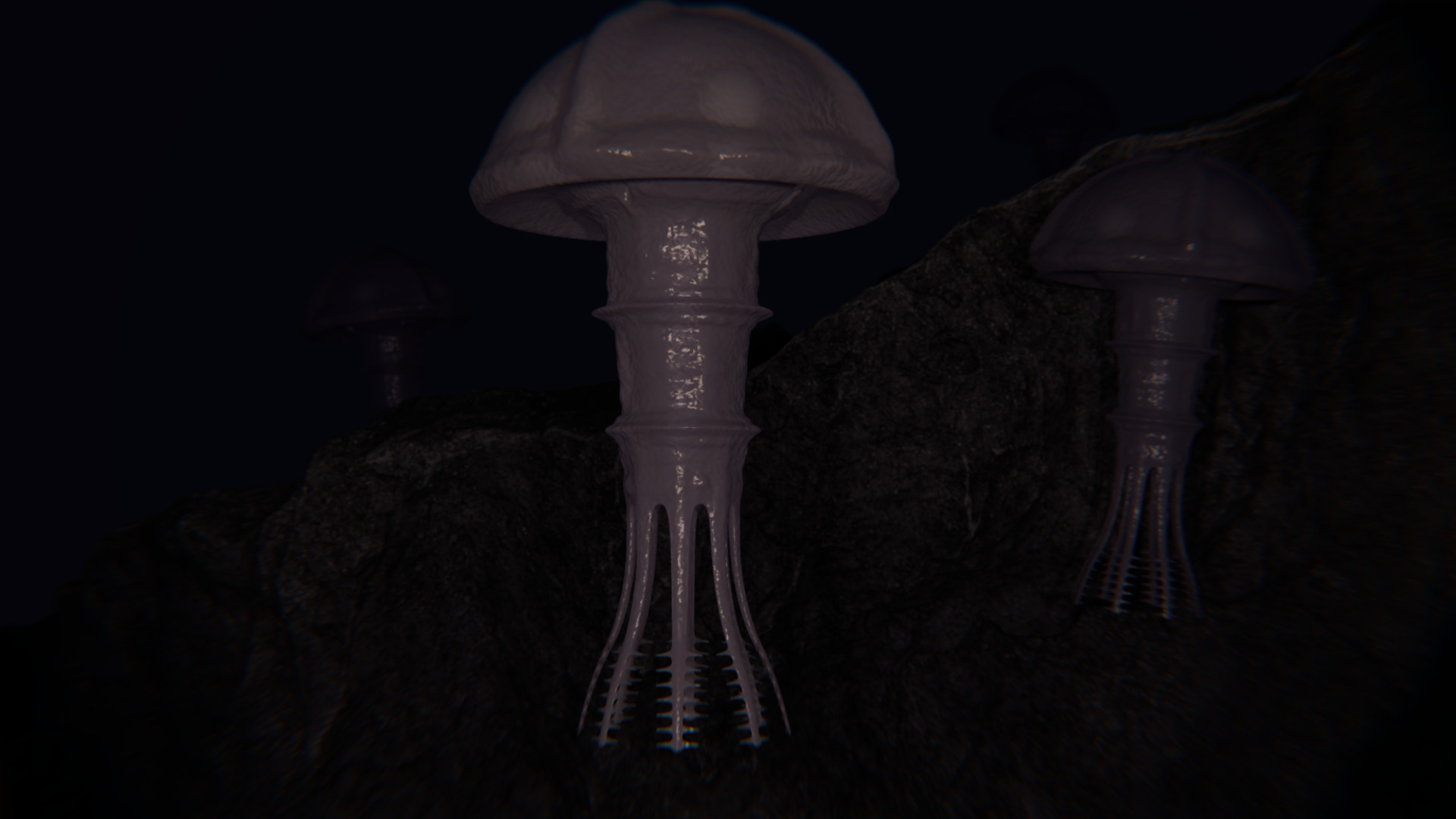Soundglobe
Soundglobes are predators of the abyssopelagic and hadal zones. [Creature design by Willem de Zwijger]
Basic Information
Anatomy
Soundglobes have eight tentacles, which have seven pink small hair like things that can grab their prey. They have an air bubble on top of their body, named a “bell”, and they have two small air-filled discs on their body for stabilizing in the ocean currents. Under the bell are gills which makes it possible for them to gather oxygen for their blood. They move by moving their tentacles in a way to propel themself in certain directions. They can also move by moving water through their gills. Since the food is scarce in the deep sea, the species is smaller than its ancestors to save energy. Instead of the 9 centimeters in length (of the Filterglobe) they are only about 5 centimeters in length on average. The stabilizing “discs” present in their body are no longer as crucial as before. This caused those “discs” to evolve smaller with the benefit of saving energy. Without much light so deep in the sea, they also gradually lost their eyes. They don’t need their eyes anymore if there is no light. This saves them energy.
Genetics and Reproduction
Soundglobes reproduce sexually and are hermaphrodites. They reproduce through their mouth mating oral end to oral end. One of the first things they will develop after they geminate is the possibility to move. Once they know how to move they will try and go to the nearest sounds made by the soundglobe.
Ecology and Habitats
Soundglobes are filter feeders and predators of small nektonic organisms. They can digest their prey by moving their tentacles into their mouths. This prey is caught by their tentacles. These soundglobes live in the deep oceans.
Additional Information
Geographic Origin and Distribution
Soundglobes live mainly North of Yama and Natash and east of Arctica as well as in the deep trenches of the ocean.
Perception and Sensory Capabilities
Without eyes soundglobes developed a different way of communicating. The muscles present in their air-filled-head, called a “bell”, oscillate. This causes a sound to be made, from which the species derives their name. The vibration this sound makes can be sensed by others of the species. This communication is crucial for finding mates and reproducing. The more communication, the better the species survives. This lead to Soundglobes with larger muscles in the bell getting the upper hand in natural selection. A main stroke of these muscles exist on each of the four sides of the Soundglobe. The strokes meet in the middle at the top of the animal. These muscles are the last to develop in the Soundglobes.
Genetic Ancestor(s)
Scientific Name
Abyssoglobos tumultuantem
Origin/Ancestry
Xenoradiata
Average Height
5 cm
Geographic Distribution
Remove these ads. Join the Worldbuilders Guild











Comments